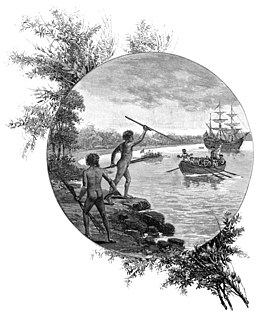 W
WThe history of Indigenous Australians began at least 65,000 years ago when humans first populated the Australian continental landmasses. This article covers the history of Aboriginal Australian and Torres Strait Islander peoples, two broadly defined groups which each include other sub-groups defined by language and culture.
 W
WAboriginal breastplates were a form of regalia used in pre-Federation Australia by white colonial authorities to recognise those they perceived to be local Aboriginal leaders. The breastplates were usually metallic crescent-shaped plaques worn around the neck by wearer.
 W
WAboriginal Reserves in New South Wales, together with Stations, and Aboriginal Missions in New South Wales were areas of land where many Aboriginal people were forced to live in accordance with laws and policies. The British government, which controlled the Australian colonies, and later the state governments had various policies of segregation and assimilation. The Aboriginal reserves were established by government authorities as portions of land set aside for the sole use of Aboriginal people, a practice that continued after Federation in 1901. Of the 85 Aboriginal reserves created from 1885 to 1895, 47 were initiated by Aboriginal families.
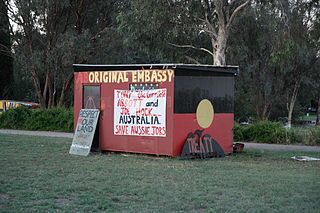 W
WThe Aboriginal Tent Embassy is a permanent protest occupation site as a focus for representing the political rights of Aboriginal Australians. First established in 1972 as a protest against the McMahon government’s approach to Indigenous Australian land rights, it is made up of signs and tents. Since 1992 it has been located on the lawn opposite Old Parliament House in Canberra, the Australian capital. It is not considered an official embassy by the Australian Government. The targets of protests at the Embassy have changed over time, and as of 2020 include not only land rights but also Indigenous sovereignty and self-determination.
 W
WAboriginal trackers were enlisted by Europeans in the years following British colonisation of Australia, to assist them in exploring the Australian landscape. The excellent tracking skills of these Aboriginal Australians were advantageous to settlers in finding food and water and locating missing persons, capturing bushrangers and violently "dispersing" other groups of Indigenous peoples.
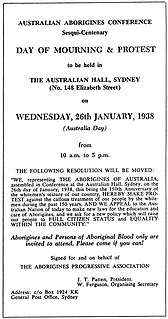 W
WThe Aborigines Progressive Association (APA) was established in 1937 by William Ferguson and Jack Patten in Dubbo, New South Wales. Ferguson led a group in the western part of the state, while Patten assembled an alliance of activists in the north-east. Both wings of the APA were involved in political organisation, rallies, and protests in both Aboriginal communities and reserves and major NSW centres such as Sydney.
 W
WThe Aborigines' Friends' Association (AFA) was established out of concern for ‘the moral, spiritual and physical well-being’ of Australian Aboriginal people from the Northern Territory and particularly South Australia. This organisation operated for over 100 years, and had their final meeting in the year 2001.
 W
WThe Australian Aborigines' League was established in Melbourne, Australia, in 1933 by William Cooper and others, including Margaret Tucker, Eric Onus, Anna and Caleb Morgan, and Shadrach James. Cooper was secretary of the League.
 W
WThe Australian Institute of Aboriginal and Torres Strait Islander Studies (AIATSIS), established as the Australian Institute of Aboriginal Studies (AIAS) in 1964, is an independent Australian Government statutory authority. It is a collecting, publishing and research institute and is considered to be Australia's premier resource for information about the cultures and societies of Aboriginal and Torres Strait Islander peoples. The Institute is a leader in ethical research and the handling of culturally sensitive material and holds in its collections many unique and irreplaceable items of cultural, historical and spiritual significance. The collection at AIATSIS has been built through over 50 years of research and engagement with Aboriginal and Torres Strait Islander communities and is now a source of language and culture revitalisation, native title research and family and community history. AIATSIS is located on Acton Peninsula in Canberra, Australian Capital Territory.
 W
WAustralian native police units, consisting of Aboriginal troopers under the command usually of a single white officer, existed in various forms in all Australian mainland colonies during the nineteenth and, in some cases, into the twentieth centuries. The Native Police were utilised as a cost-effective and paramilitary instrument in the expansion and protection of the Australian frontier. Mounted Aboriginal troopers of the Native Police, armed with rifles, carbines and swords, escorted surveying groups, pastoralists and prospectors into frontier areas. They would usually then establish base camps and patrol these areas to enforce warrants, conduct punitive missions against resisting local Aboriginal groups, and fulfil various other duties.
 W
WThe Bathurst War (1824), was a war between the Wiradjuri nation and the United Kingdom of Great Britain and Ireland. Following the successful Blaxland, Lawson, and Wentworth expedition to find a route through the "impenetrable" Blue Mountains in 1813, this allowed the colony to expand onto the vast fertile plains of the west.
 W
WBilin Bilin was a member of the Yugambeh Bundjalung people in Australia, who gained respect of the European colonials and received a king plate for it. Alternate names for him include Jackey Jackey, Kawae Kawae, John Logan, and Bilinba.
 W
WThe Black War was the period of violent conflict between British colonists and Aboriginal Australians in Tasmania from the mid-1820s to 1832. The conflict, fought largely as a guerrilla war by both sides, claimed the lives of more than 200 European colonists and between 600 and 900 Aboriginal people, nearly annihilating the island's indigenous population. The near-destruction of the Aboriginal Tasmanians and the frequency of mass killings has earned the Black War recognition as an example of "true" genocide perpetrated by English colonialism.
 W
WBungaree, or Boongaree, was an Aboriginal Australian from the Kuringgai people of the Broken Bay area north of Sydney, who was known as an explorer, entertainer, and Aboriginal community leader. He is also significant in that he was the first person to be recorded in print as an Australian, and the first Australian to circumnavigate the continent.
 W
WKatherine Mary Clutterbuck CSC MBE, usually known as Sister Kate, was an Anglican nun who pioneered a cottage home system for looking after orphan babies and children in Western Australia. She later became well known for her work with Indigenous Australian children who were selected according to a criterion of skin colour and sent to her homes to groom the young "nearly white" children for absorption into the white community. These children would later be described as part of the Stolen Generation.
 W
WA Custody Notification Service (CNS), sometimes referred to as a Custody Notification Scheme, is a 24-hour legal advice and support telephone hotline for any Indigenous Australian person brought into custody, connecting them with lawyers from the Aboriginal legal service operating in their state or territory. It is intended to reduce the high number of Aboriginal deaths in custody by counteracting the effects of institutional racism. Legislation mandating the police to inform the legal service whenever an Aboriginal or Torres Strait Islander person is brought into custody is seen as essential to ensure compliance and a clear record of events. Where Custody Notification Services have been implemented, there have been reductions in the numbers of Aboriginal deaths in custody.
 W
WDark Emu: Black Seeds: Agriculture or Accident? is a 2014 non-fiction book by Bruce Pascoe. It reexamines colonial accounts of Aboriginal people in Australia, and cites evidence of pre-colonial agriculture, engineering and building construction by Aboriginal and Torres Strait Islander peoples. A second edition, published under the title Dark Emu: Aboriginal Australia and the Birth of Agriculture was published in mid-2018, and a version of the book for younger readers, entitled Young Dark Emu: A Truer History, was published in 2019. Both the first and the children's editions were shortlisted for major awards, and the former won two awards in the New South Wales Premier's Literary Awards.
 W
WThe Day of Mourning was a protest held by Aboriginal Australians on 26 January 1938, the 150th anniversary of the British colonisation of Australia. It was declared to be a protest of 150 years of callous treatment and the seizure of land and purposefully coincided with the Australia Day celebrations held by the European population on the same day. The protest became a tradition, and annual Days of Mourning have been held to this day.
 W
WWauba Debar (1792–1832) was a female Aboriginal Tasmanian. Her grave is a historic site located in the east coast Tasmanian town of Bicheno, which memorialises her rescue of two sealers, one of them her husband, when their ship was wrecked about 1 km from shore during a storm. She assisting first her husband, then the other sealer safely to shore.
 W
WA Descriptive Vocabulary of the Language in Common Use Amongst the Aborigines of Western Australia is a book by George Fletcher Moore. First published in 1842, it represents one of the earliest attempts to record the languages used by the Aboriginal peoples of Western Australia. The book is a compilation by Moore based on the works of Robert Lyon, Francis Armstrong, Charles Symmons, the Bussell family and George Grey, as well as his own observations. It was published in 1842 at the expense of Moore and Governor of Western Australia John Hutt. In 1884 it was republished as part of Moore's Diary of Ten Years Eventful Life of an Early Settler in Western Australia and also A Descriptive Vocabulary of the Language of the Aborigines.
 W
WThe exhumation of Yagan's head was the result of a geophysical survey and archaeological dig at a grave site in the Everton Cemetery, Liverpool in 1997.
 W
WThe Freedom Ride of 1965 was a significant event in the history of civil rights for Indigenous Australians.
 W
WHalf-Caste Act was the common name given to Acts of Parliament passed in Victoria and Western Australia in 1886. They became the model for legislation to control Aboriginal people throughout Australia, such as the Aboriginals Protection and Restriction of the Sale of Opium Act 1897 in Queensland.
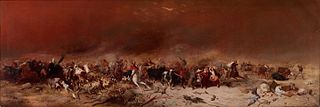 W
WThe history wars in Australia are an ongoing public debate over the interpretation of the history of the British colonisation of Australia and development of contemporary Australian society. The Australian debate often concerns the extent to which the history of European colonisation post-1788 and government administration since Federation in 1901 may be characterised as having been:a relatively minor conflict between European colonists and Indigenous Australians, and generally lacking in events that might be termed "invasion", "warfare", "guerrilla warfare", "conquest" or "genocide", and generally marked instead by humane intent by government authorities, with damage to Indigenous peoples largely attributable to unintended factors rather than to malicious policies; or an invasion marked by violent conflict at the frontier, guerrilla warfare between Europeans and Aboriginal people, involving frequent or significant massacres of Aboriginal peoples engaged in defending their traditional tribal lands; a situation which can be said to have developed either nationally, or in certain areas, into something like a war of "extermination" or something which accords with the term genocide as a consequence of British imperialism and colonialism involving continued dispossession, exploitation, ill-treatment and cultural genocide.
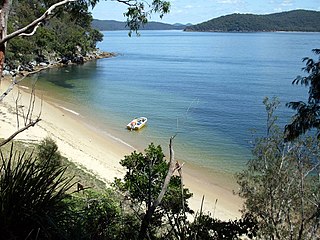 W
WHungry Beach is situated beside Cowan Creek and the Hawkesbury River in Ku-ring-gai Chase National Park in the northern part of Sydney, Australia.
 W
WThe Javanese presence in Australia has been reported by native Southeast Asian and European people over several centuries. The most renowned record is from the itinerary of Chiaymasiouro, king of Demak, and Declaraçam de Malaca e India Meridional com o Cathay by Manuel Godinho de Eredia. Chiaymasiouro describes a land called Luca Antara in Southeast direction of Java, which Eredia coined the term India Meridional. According to Chiaymasiouro's accounts, a subgroup of Javanese people already settled in those lands, but when Eredia's servant went to Luca Antara in 1610, the land had seemingly been abandoned.
 W
WKilcoy is a town and locality in the Somerset Region local government area in South East Queensland, Australia.
 W
WKoowarta v Bjelke-Petersen, was a significant court case decided in the High Court of Australia on 11 May 1982. It concerned the constitutional validity of parts of the Racial Discrimination Act 1975, and the discriminatory acts of the Government of Queensland in blocking the purchase of land by Aboriginal people in northern Queensland.
 W
WThe La Grange expedition was a search expedition carried out in the vicinity of Lagrange Bay in the Kimberley region of Western Australia in 1865. Led by Maitland Brown, the expedition searched for three settlers who had failed to return from an earlier exploring expedition. The three men were eventually found dead, having been speared and clubbed to death in their sleep by Indigenous Australians. A number of Indigenous people were subsequently killed by members of the expedition in a controversial incident that is often now referred to as the "La Grange Massacre", although the fairness of this term remains a matter of some debate.
 W
WGresley Lukin (1840–1916) was an Australian public servant, newspaper owner, company manager and newspaper editor, most prominently the part-proprietor of the Brisbane Newspaper Company from November 1873 to December 1880, then and still the leading journal in Queensland under the name The Courier-Mail.
 W
WThe Austronesian Makassar people from the region of Sulawesi began visiting the coast of northern Australia sometime around the early to middle 1700s, first in the Kimberley region, and some decades later in Arnhem Land.
 W
WJulieka Ivanna Dhu was a 22-year-old Australian Aboriginal woman who died in police custody in South Hedland, Western Australia, in 2014. On 2 August that year, police responded to a report that Dhu's partner had violated an apprehended violence order. Upon arriving at their address, the officers arrested both Dhu and her partner after realising there was also an outstanding arrest warrant for unpaid fines against Dhu. She was detained in police custody in South Hedland and was ordered to serve four days in custody in default of her debt.
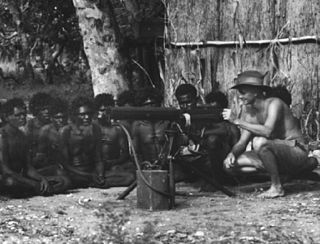 W
WThe Northern Territory Special Reconnaissance Unit (NTSRU) was an irregular warfare unit of the Australian Army during World War II, composed mainly of Aboriginal people from the Northern Territory. Formed in 1941, the unit patrolled the coast of Arnhem Land during 1942–43 searching for signs of Japanese landings and trained to fight as guerrillas using traditional weapons in the event of an invasion. In 1943, as the war moved northward from the Australian coast, the NTSRU was disbanded.
 W
WPossum-skin cloaks were a form of clothing worn by Aboriginal people in the south-east of Australia – present-day Victoria and New South Wales.
 W
WThe prehistory of Australia is the period between the first human habitation of the Australian continent and the colonisation of Australia in 1788, which marks the start of consistent written documentation of Australia. This period has been variously estimated, with most evidence suggesting that it goes back between 50,000 and 65,000 years.
 W
WTheophilus Parsons Pugh (1831–1896) was an Australian journalist, newspaper editor, politician, publisher and public servant, as well as the editor-in-chief of the Moreton Bay Courier, which he in 1861 renamed to The Courier, renamed again in 1864 to the Brisbane Courier.
 W
WThe Redfern Aboriginal Tent Embassy was a protest camp run by Aboriginal Australians in the inner-Sydney suburb of Redfern. Its aim is to keep an area of land known as The Block in Aboriginal hands, and to ensure the land is used solely for low-cost housing for Aboriginal people. It was started by Aboriginal elder, Jenny Munro, and was named after the original Aboriginal Tent Embassy in Canberra.
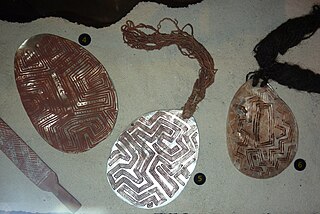 W
WRiji are the pearl shells traditionally worn by Aboriginal men in the north-west part of Australia, around present day Broome. The word riji is from the Bardi language. Another word for it is jakuli.
 W
WRosendo Salvado Rotea OSB was a Spanish Benedictine monk, missionary, bishop, author, founder and first abbot of the Territorial Abbey of New Norcia in Western Australia.
 W
WA scarred tree or scar tree, also known as a canoe tree and shield tree, is a tree which has had bark removed by Aboriginal Australians for the creation of bark canoes, shelters, weapons such as shields, tools, traps, containers or other artefacts. Carved trees are created as a form of artistic and spiritual expression by some Aboriginal peoples, to mark sites of significance such as burial sites.
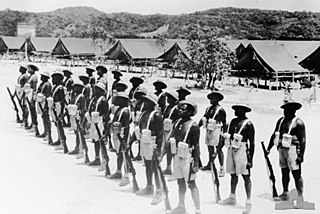 W
WThe Torres Strait Light Infantry Battalion was an infantry battalion of the Australian Army during the Second World War. Initially raised as a company-sized unit in 1941, it was expanded to a full battalion in 1942 and was unique in that almost all of its enlisted men were Torres Strait Islanders, making the battalion the only Indigenous Australian battalion ever formed by the Australian Army. The battalion was used mainly in the garrison role, defending the islands of the Torres Strait, although in 1943 a detachment was sent to patrol Dutch New Guinea. Following the end of the war, the battalion was disbanded in 1946.
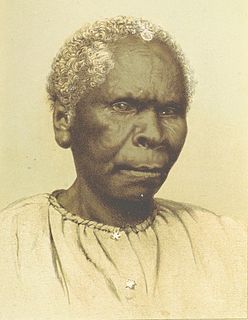 W
WTruganini was a woman widely considered to have been the last full-blooded Aboriginal Tasmanian, although she was outlived by Fanny Cochrane Smith (1834–1905).
 W
WTullamareena was a senior man of the Wurundjeri, a Koori, (Aboriginal) people of the Melbourne area, at the time of the British settlement in Victoria, Australia, in 1835. He is believed to have been present at the signing of John Batman's land deal in 1835. He was known to have been a resistor to British occupation of Wurundjeri lands. He was described by the Reverend George Langhorne, an early Port Phillip missionary as "a steady, industrious man".
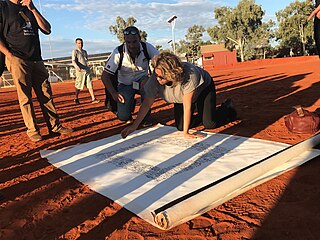 W
WThe Uluru Statement from the Heart was released on 26 May 2017 by delegates to the First Nations National Constitutional Convention, held over four days near Uluru in Central Australia. The Convention was held after the 16-member Referendum Council, appointed in 2015, had travelled around the country and met with over 1,200 people. The statement was issued after the Convention, and calls for a "First Nations Voice" in the Australian Constitution and a Makarrata Commission to supervise a process of "agreement-making" and truth-telling between the Australian Government and Aboriginal and Torres Strait Islander peoples.
 W
WFrederick Walker public servant, property manager, Commandant of the Native Police, squatter and Australian explorer.
 W
WThe Warangesda Aboriginal Mission is a heritage-listed former Australian Aboriginal mission site at Warangesda, Darlington Point, Murrumbidgee Council, New South Wales, Australia. The mission was designed and built between 1880 and 1926. It is also known as Warangesda Aboriginal Mission and Station, Warangesda Mission, Warangesda Aboriginal Station, and Warrangesda. It was added to the New South Wales State Heritage Register on 9 July 2010.
 W
WWarratyi is the site of a prehistoric rock shelter in the Flinders Ranges in South Australia. Located around 550 kilometres (340 mi) north of Adelaide and about 200 kilometres (120 mi) inland, it has been identified as the oldest known site of human habitation in inland Australia. Newspapers reported that this rock shelter was discovered by chance in 2011 by a local resident who stumbled upon it while looking for somewhere to go to the toilet. Researchers found thousands of artefacts and bone fragments, which enabled them to date the shelter's occupation to a number of periods between 49,000 and 10,000 years ago. The finds include the earliest evidence in Australia of the development of bone and stone-axe technology, the use of ochre, and interaction with megafauna such as Diprotodon.